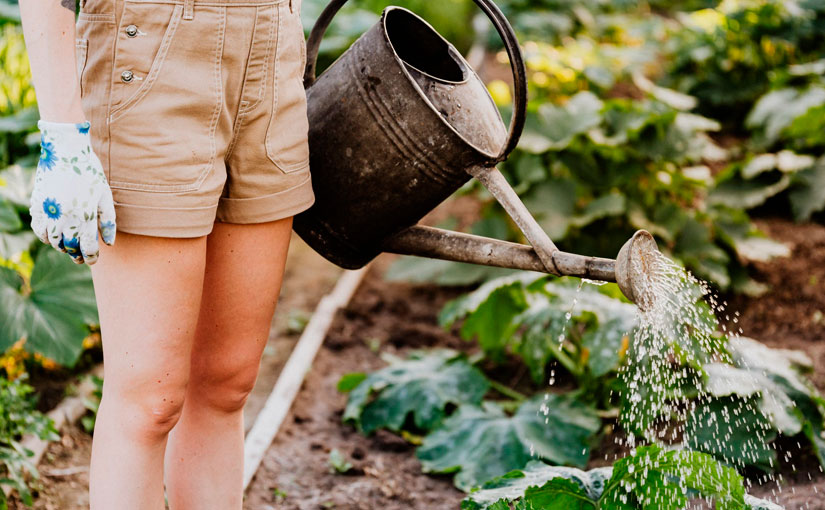If you’re a green thumb, you know the physical, mental, and spiritual benefits of tending to gardens, whether that’s prized roses or a family garden mixed with vegetables and flowers.
If you’re willing to get your hands dirty and sweat on hot days when it’s time to weed your garden, then you want to read the following ideas for growing your garden on a budget.
How to Garden for Cheap
You can stay on budget and still have a beautiful vegetable garden and flowerbeds. You need to learn about soil health, how to plant seeds and cuttings, and find the best budget gardening supplies near you.
Fortunately, the internet has loads of online magazines and websites devoted to gardening. Your city’s library will have gardening books, and your local garden center may have programs for teaching you about best gardening practices. You can also tour local gardens to learn more about gardening in your local area.
Here are some money-saving tips for growing a garden this year:
- Know your area: Go to USGA to find your local plant hardiness zone. For example, in growing zone 6b, it’s safe to plant vegetables and other tender plants to go into the ground after Mother’s Day. There should be no more frosts and freezes in the middle of May.
- Commit to planting from seed, starter plants, or cuttings: You can buy seeds through catalogs, at your local garden center, and big-box retailers.
Only buy seeds and starter plants that you need. For example, you don’t need 500 carrot seeds if you have a small kitchen garden. Instead, you may need 10 or 20 seeds.
- For your flowerbeds and landscaped areas, invest in perennials, shrubs, and trees: While vegetable plants are annuals, you’ll get more bang for your buck when you invest in perennials for flowerbeds and landscaped areas.
In the fall or early spring, you can divide perennials, such as hostas, daylilies, and coneflowers, to use in other beds.
Read more: 10 Must-Have Gardening Tools You Need
- Create shapes in your flowerbeds and landscaped areas to add variety and visual interest: Use a tape measure, a rounded garden shovel, and string. Measure your shaped area and remove the turfgrass.
- Plant your lawn with grass seed: You save money by doing your own lawn care. Sod is very expensive and doesn’t always take well to your yard. Plus, you’re paying a lawn service to plant turfgrass seed or layout sod, which you can do independently.
Some keys for successful turfgrass cultivation: Only use grass seeds suited for your area. If you live in the northern part of the U.S. or Canada, you need cool season grasses.
If you live in the middle part of the U.S., you’re in the temperate zone where you can plant some warm season grasses, such as zoysia, in full sun. You can also plant tall fescue or a fescue mix in part sun or shady areas.
And if you live in the southern part of the U.S., you need to plant all warm season grasses. Make sure that you buy quality seed and follow the manufacturer’s directions.
- Use hanging baskets to make your deck, front porch, or patio area pop: Petunias, verbena, and sweet potato vine make gorgeous baskets. You can also plant strawberries in hanging baskets that attract pollinators, visual interest, and delicious fruit.
- Create cozy areas in your flowerbeds: While you may need to watch your pennies, you can find benches and patio furniture at consignment shops and on Facebook Marketplace. Just keep your eyes open—one gardener’s junk is another gardener’s treasure.
Learn more: What Is Organic Gardening?
- Use paint to brighten your fence: Your fence ordeck might need a fresh coat of paint to make it come alive again. Paint is one of the best low-cost ways to brighten your outdoor spaces!
If you like to upcycle old furniture, use water-resistant paint to remake it into a gardener’s treasure. Old dry sinks, for instance, make great places to put gardening tools and pots.
- Don’t forget to mulch your beds and vegetable garden. Again, you can find low-cost organic mulch that keeps weeds away, regulates soil temperature, and holds in moisture. Plus, mulch adds nutrients to the ground as it breaks down.
- Make compost to save money. Your lawn, flowerbeds, and vegetable garden need compost to feed the soil and ecosystem.
Recycle food scraps, potted plants with soil, grass trimmings, leaf litter, newspapers, and other materials in a compost system. You can also build your compost bin.
Two upsides for making your compost: Less garbage in the local landfill, and you get a free soil amendment.
Brinly’s Garden Attachments Make Digging a Garden Plot a Breeze
Brinly’s ground-engaging garden attachments include top-of-the-line tools that plow your garden for the spring. Our comprehensive line of garden attachments at Brinly include:
- Box scraper
- Disc harrow
- Cultivator
- Rear blade.
Our tractor attachments will fit your sleeve hitch, meaning you can achieve the results you want right from the seat of your tractor. Attach the garden cultivator to remove weeds, loosen dirt, or use the disc harrow to ensure uniform soil.
You can buy your next Brinly garden attachment online. If you have any questions about your Brinly garden product, contact our customer service today by dialing 877-728-8224 or filling out our contact form.
Sources:
HouseBeautiful.com, 18 Cheap Garden Ideas for Your Outdoor Space.
RealHomes.com, Budget Garden Ideas: 28 Brilliantly Cheap Ways to Style your Outdoor Space This Year.
TheSpruce.com, 9 Things to Know about Starting a Garden from Scratch.


